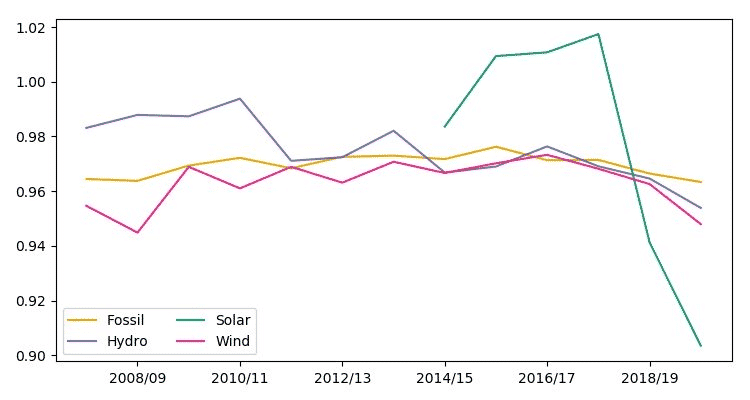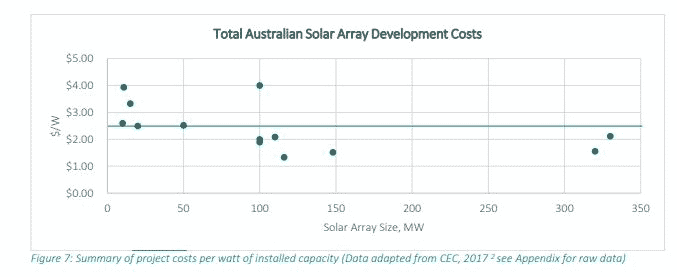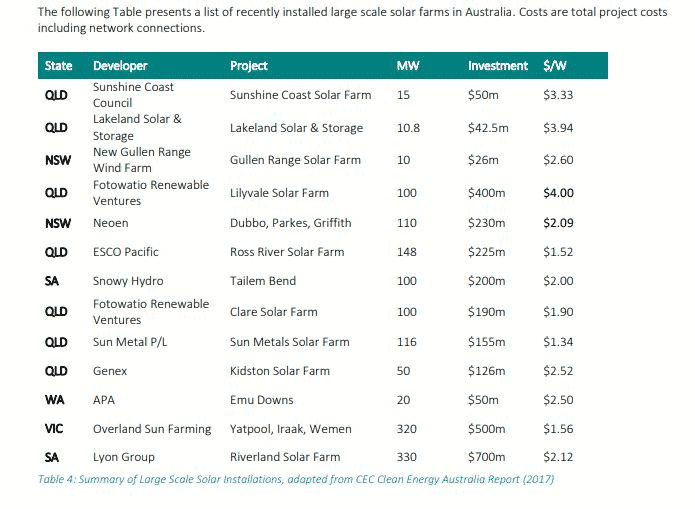Case Studies – Estimating costs of our very own Australian Solar Farms

In May 2019, Giles Parkinson titled an article “It’s not easy to build a solar farm in Australia any more”.
This was published on the Renew Economy website on the 16th of May 2019.
Mr. Parkinson goes on to state that albeit in the past, the powers to be believed it was easier to build a solar farm than a wind farm. Why the belief was that they were quicker to build, fewer hassles around the development application process and much fewer objections from neighbours.
“In Queensland, a rule from left field, or more specifically from the Electrical Trades Union, means that no one is too sure when the next solar farm might begin construction. The new rules introduced this week by the Queensland Labor government, at the urging of the ETU, mean that only licensed electricians can do much of the installation work, and it has stunned the industry”, notes Mr. Parkinson.
In addition to the opinions expressed by Mr. Parkinson, it seems that contractors used to build these solar farms are feeling the pressure. Or at worst, collapsed them. In recent months we have seen the collapse of RCR Tomlinson, one of the country’s biggest engineering and contracting firms in the solar farm industry.
Likewise, Tempo Australia has felt the pressure and suspended shares from trade due to cost blowouts on a farm under construction in Victoria.
Given that prediction by the Clean Energy Council of 50% renewable targets, it is going to be a hard push without these major players completing these farms.
Mr. Parkinson goes on to note that Ekistica recently illustrated the marginal loss factor of the four energy sources (Fossil, Solar, Hydro and Wind).
The graph shows how many of the fuels are sitting around 95% to 98% of their output gets paid. Whereas solar is struggling to stay above the 90% mark.

This output rating is provided by the Australian Energy Market Operator (AEMO). The Marginal loss factor is the amount of output that gets credited to receive revenue. Meaning, in 2019, solar is currently rating at 0.9. This means that the average solar farm is getting credit for around 90% of it output.
“One solar farm, in Broken Hill, has been marked down to 0.75, which means only 75 percent of its output gets paid”, said Mr. Parkinson.
CEO of the AEMO, Audry Zibelman, says that the AEMO is doing all that they can, citing a cultural shift yet to be embraced as a major roadblock.
But for many frustrated solar farm developers, it is not fast enough. “What we are going to see is a pause,” said Morgan Stanley analyst Rob Koh.
On the ARENA website (Australian Renewable Energy Agency) it states that the cost of a Large Scale Solar (LSS) farm in Australian to construct has dramatically fallen over the years.
“The cost of large-scale solar PV has fallen dramatically in recent years from $135 per megawatt-hour (MWh) in 2015 to an expected $44.50 – $61.50 per MWh in 2020.”
This reduction was driven by a combination of international and local improvements and is expected to continue. International cost drivers include the cost of manufacturing, and local costs include the cost of finance and construction.
A megawatt is a unit for measuring the power that is equivalent to one million watts. One megawatt is equivalent to the energy produced by 10 automobile engines. A megawatt-hour (Mwh) is equal to 1,000 Kilowatt-hours (Kwh). It is equal to 1,000 kilowatts of electricity used continuously for one hour.
Case Study 1 –
MCG Quantity Surveyors were recently commissioned to provide feasibility costing on a Large Scale Solar Farm in QLD. The total cost of the development came to $14,000,000.
The five-megawatt, 16,000-panel farm produces electricity that is fed back into the grid.
This Solar farm project costs total – $2.80 per watt.
Case Study 2 –
MCG Quantity Surveyors were recently commissioned to provide feasibility costing on a Large Scale Solar Farm in NSW. The total cost of the development came to $9,848,025.
The five-megawatt, 16,000-panel farm produces electricity that is fed back into the grid.
This Solar farm project costs total – $1.96 per watt.
Interestingly, FG Advisory has recently provided a report to the Victorian Greenhouse Advisory to indicate the average cost per watt for the construction of Large Scale Solar farms. They average the cost to be $2.41 per watt.

In addition to this, the finding was based on reviewing 13 Large Scale Solar Farms, already constructed, they found the average to be $2.41 per watt.

Written by Marty Sadlier
Founding Director and Owner at MCG Quantity Surveyors
